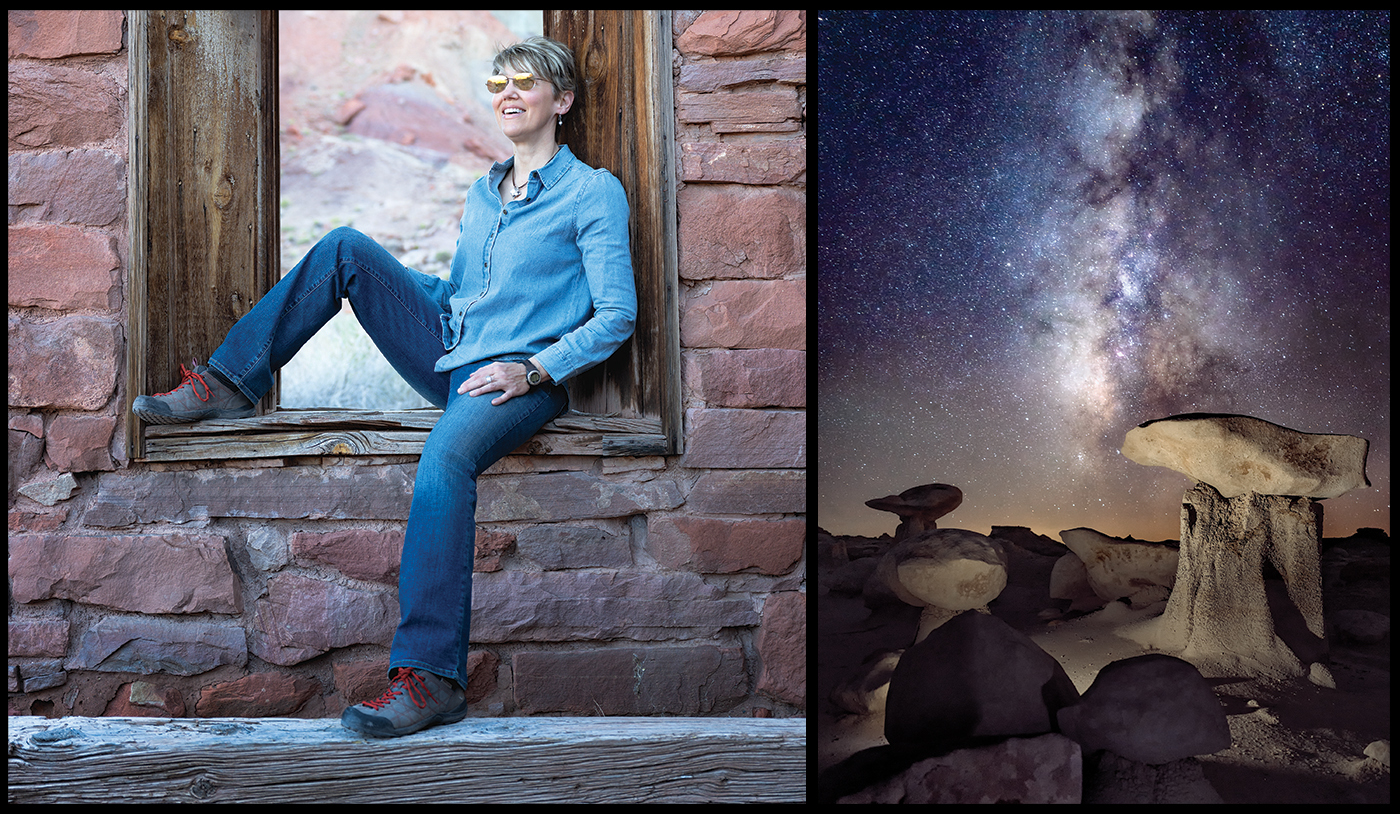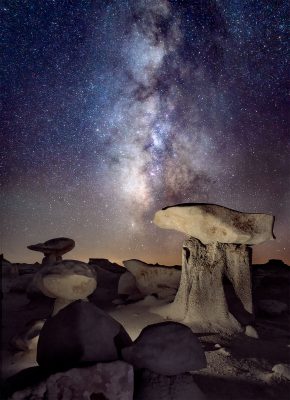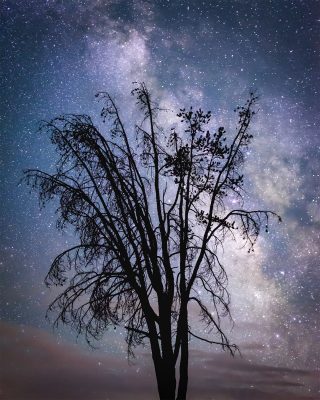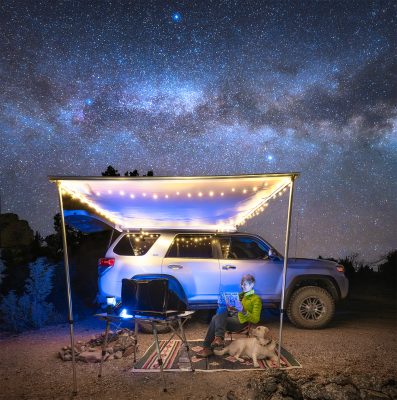
Defender of Darkness: Christine Kenyon’s Night-Sky Advocacy
Art
Dark-sky photographer and anti-light pollution advocate Christine Kenyon discovered the Milky Way on a westward road trip. She was on a break while attending junior high school, and Kenyon’s father—chief of the Smithsonian’s Office of Photography at the time—had brought her along as he led a string of landscape-photography workshops in the Rocky Mountains.
The pair drove 36 hours from Washington, D.C., where the blackness of the night sky is obscured by thick metropolitan light pollution. Upon their arrival, Kenyon found herself stunned with awe as she experienced the iconic beauty of Jenny Lake in the Tetons and Colorado’s Mt. Evans. “At one point, my dad told everybody to grab a blanket,” Kenyon says. “We laughed and looked at the darkening sky—the number of stars and how black the sky was … I fell in love,” says Kenyon. Decades later, Kenyon is living in Utah as a professional photographer and founder of the Save a Star Foundation, a nonprofit “dedicated to preserving dark skies in the Western United States.”

“My personality is: ‘Let’s just hit the road!’” she says, “but also, I have a destination in mind.”
Though the seeds of Kenyon’s childhood have clearly sprouted into her passion and pursuits of today, it has been a wandering path. After a thorough education in photography from her father that led to several wins in adult photo competitions as a teenager, Kenyon found music, leading bands and writing songs into her 20s. Next, Kenyon got married, worked for a large PR firm and started a graphic design business of her own—all before returning to photography as a full-time profession in 2017. She viewed that year as a trial run that would test the potential of making a living with her camera. Within months of launching her social media accounts, she had amassed a viable following.
In a Toyota 4Runner crammed with camera gear and multiple dogs, Kenyon seeks her next photograph with a mixture of spontaneity and meticulous planning. “My personality is: ‘Let’s just hit the road!’” she says, “but also, I have a destination in mind.” One example of Kenyon’s intensive preparation features her dog Tuffy sitting below Metate Arch in Grand Staircase–Escalante National Monument as the Milky Way looms above. “It’s a blend, meaning several photos were taken at separate times, forming a single composition.” Kenyon used an app called PhotoPills to determine the perfect moment of alignment between the arch and the Milky Way. Then she spent several months editing the shot to achieve a precise final result.
Aside from these half-scheduled, half-winging-it photo road trips, Kenyon offers night photography workshops and travels for speaking engagements. Increasingly, however, Kenyon’s advocacy work through Save a Star has become a focal point of her life. “My goal for the future isn’t so much to be a famous photographer as it is to have a legacy that is protecting the night sky, something that we hold dear,” she says.
“Save a Star has already scored some measurable wins against light pollution.”

Light pollution is the anthropogenic and artificial light that alters the natural blackness of the night sky. In affected areas, humans live without access to unobstructed darkness. Additionally, light pollution has severe ecological consequences.
While there are several anti-light pollution organizations at the international level, Kenyon observed a need for a nonprofit that could unite the collective American West. This realization was born from Kenyon’s core appreciation of dark skies, and she soon began to assemble a board of directors. Now, the board consists of lighting designer Ted Maestas (of the 2002 Winter Olympics), Draper city council member Calvin Roberts, insurance executive Lana Mawhinney, author and photographer Royce Bair, nonprofit consultant Melinda Crandall and Kenyon’s mother—Helga Kenyon. [Editorial Note: In the print version of this article, Royce Bair’s name is incorrectly spelled as Royce Blair.]
Save a Star has already scored some measurable wins against light pollution. Kenyon has discovered that the foundation’s mission can benefit from its nonpartisan nature: “Light pollution is the least politically charged environmental issue out there,” she says. “I’ve had no one throw a tomato at me like, ‘You believe in light pollution!’”
“We want people to be activated in order to make these changes. We are in a niche of our own.”

In Draper, new street lighting has recently been installed based on Kenyon’s persistent recommendations. After the lights were installed, the bulbs still seemed unnecessarily bright, and Kenyon asked her light-designer friend to explore options for dimming. After the new lights were dulled down by 50%, Kenyon was happy with the result, and the city was left with a reduced energy bill. The company that manufactures the lights also liked the idea, and they now make a light based upon the specifications that Kenyon decided upon in Draper.
Before the COVID-19 pandemic, Save a Star was preparing to host a first-ever event called Save Our Stars (SOS) in September. Though Kenyon is not sure when SOS will take place, she is certain and excited that it will. “The idea is to bring together all of the night-sky advocacy groups to one conference and hammer out a resolution, allowing advocates to pledge to participate in a unified plan for the future,” she says. Along with this full-day conference, the event will move to Antelope Island in the evening to enjoy the night sky. Ultimately, the foundation aspires to grow and take further, concrete action against light pollution. “We want people to be activated in order to make these changes. We are in a niche of our own.”
Kenyon’s work is available via her website and Instagram @christinekenyonphoto. To learn more about Save a Star and the Save Our Stars event, visit their website.